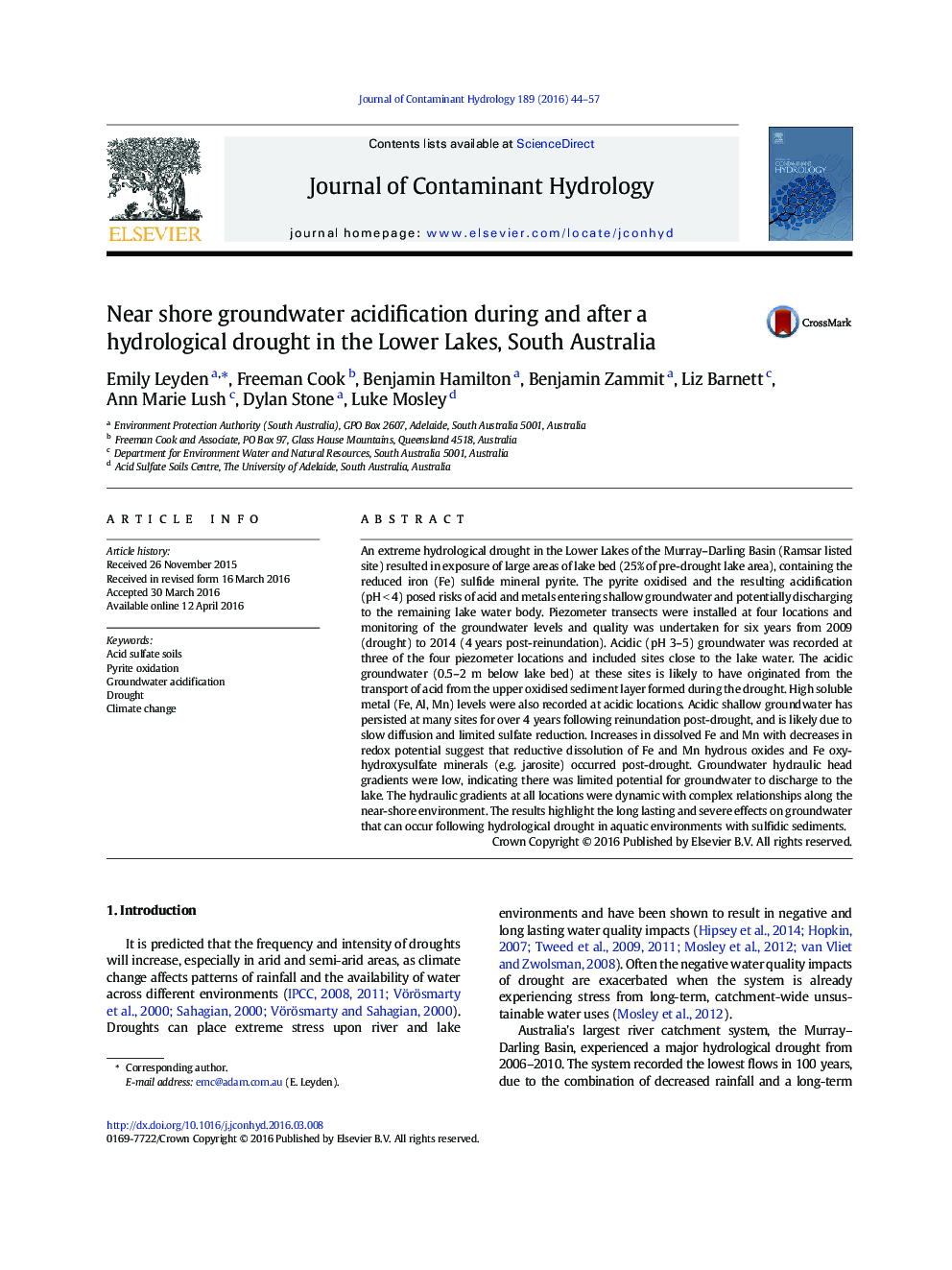| کد مقاله | کد نشریه | سال انتشار | مقاله انگلیسی | نسخه تمام متن |
|---|---|---|---|---|
| 4546393 | 1627022 | 2016 | 14 صفحه PDF | دانلود رایگان |
• Lake level decline during drought led to the acidification of lake sediments containing pyrite.
• Acidity leached to the groundwater which became acidic (pH < 5) with high dissolved metal levels.
• Low hydraulic gradients results in low flux of acidity to the lake.
• Increases in pH and alkalinity occurred post-drought but dissolved Fe and Mn increased.
• Groundwater acidification has persisted for several years post-drought at many sites.
An extreme hydrological drought in the Lower Lakes of the Murray–Darling Basin (Ramsar listed site) resulted in exposure of large areas of lake bed (25% of pre-drought lake area), containing the reduced iron (Fe) sulfide mineral pyrite. The pyrite oxidised and the resulting acidification (pH < 4) posed risks of acid and metals entering shallow groundwater and potentially discharging to the remaining lake water body. Piezometer transects were installed at four locations and monitoring of the groundwater levels and quality was undertaken for six years from 2009 (drought) to 2014 (4 years post-reinundation). Acidic (pH 3–5) groundwater was recorded at three of the four piezometer locations and included sites close to the lake water. The acidic groundwater (0.5–2 m below lake bed) at these sites is likely to have originated from the transport of acid from the upper oxidised sediment layer formed during the drought. High soluble metal (Fe, Al, Mn) levels were also recorded at acidic locations. Acidic shallow groundwater has persisted at many sites for over 4 years following reinundation post-drought, and is likely due to slow diffusion and limited sulfate reduction. Increases in dissolved Fe and Mn with decreases in redox potential suggest that reductive dissolution of Fe and Mn hydrous oxides and Fe oxy-hydroxysulfate minerals (e.g. jarosite) occurred post-drought. Groundwater hydraulic head gradients were low, indicating there was limited potential for groundwater to discharge to the lake. The hydraulic gradients at all locations were dynamic with complex relationships along the near-shore environment. The results highlight the long lasting and severe effects on groundwater that can occur following hydrological drought in aquatic environments with sulfidic sediments.
Journal: Journal of Contaminant Hydrology - Volume 189, June 2016, Pages 44–57
